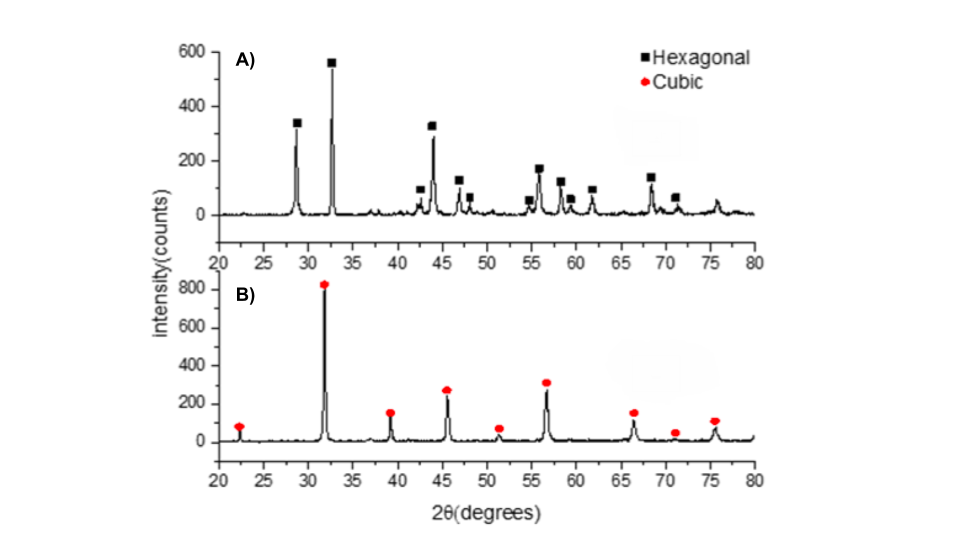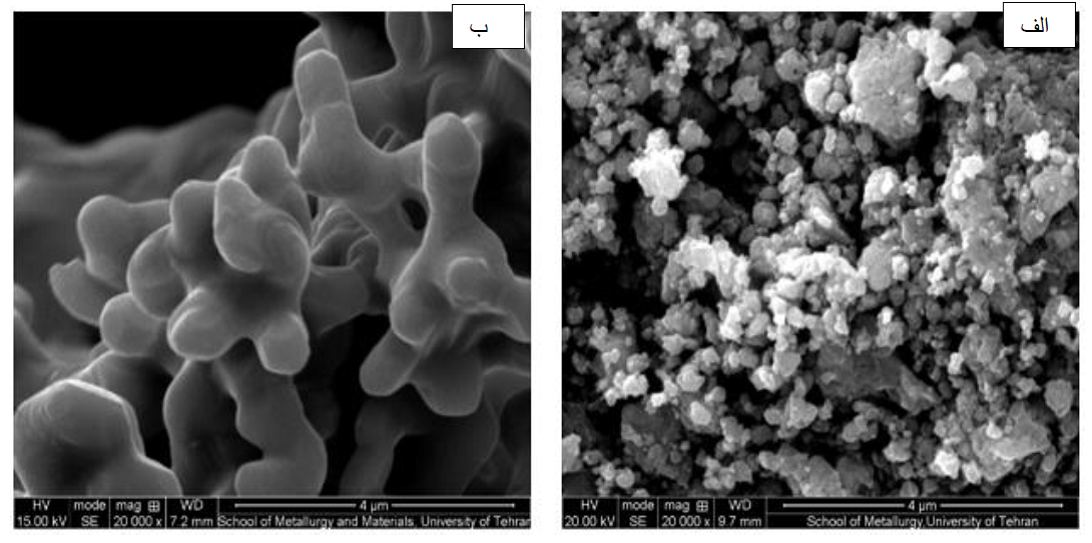
Takin Ghavimi
University of Tehran, Iran
Title: Synthesis and stabilization of highly conductive cubic SrCoO3 to increase solid oxide fuel cell efficiency
Biography
Biography: Takin Ghavimi
Abstract
Introduction: SrCoO3 is an important perovskite parent compound used for development of a variety of functional materials. As is shown in literature structural properties of different materials can change in different environments, operation temperatures and oxygen partial pressures [1-8]. Additionally, in ceramics such as SrCoO3 thermal history and synthesis process can be important factors in displaying multiple crystal structures [9]. Replacement of 20% of cobalt with iron is shown to improve the electric conductivity of this material SrCoO3 [10]. The perovskite SrCo0.8Fe0.2O3 can display mixed ionic and electronic conducting properties (MIEC) which makes this oxide useful for a variety of applications, including fabrication of oxygen separation membranes, combustion catalysts and importantly cathode/anode materials for solid oxide fuel cells (SOFC), a device that can produce electricity directly from fuels such as hydrogen and methane[11,12]. Important to our research is the cubic structure of this material which possesses the highest electronic and oxygen ionic conductivity with a reported total electric conductivity of 160 S.cm-1 at 950°C [13]. It is shown that substitution of various elements in the A and B site of this material can increase the stability of its cubic crystal structure. In this study, we have adopted a strategy of element substitution in the A site of the SrCo0.8Fe0.2O3 perovskite to stabilize its cubic crystal structure, which is believed to result in an improvement of the electric conductivity of this material.
Methods and materials: Ceramics were synthesized using co-precipitation method. the precipitation pH of at least 8 is required for the precipitation to be completed. The precipitates are subsequently calcined at a temperature of 1000°C to achieve the perovskite. The structure of synthesized ceramics is then studied using X-ray diffraction (Philips PW-1730) and scanning electron microscopy (TESCAN-MIRA3)
Results and Discussion: SrCo0.8Fe0.2O3 (SCF) and A site barium doped SCF were synthesized by a novel co-precipitation method to examine the effect of barium substitution on stabilization of the SCF cubic lattice. After synthesis, the obtained crystal structures were analyzed to evaluate the success of our co-precipitation method. Our results show that by replacement of 50% strontium with barium, the hexagonal structure of SCF at room temperature was changed to cubic (Fig. 1A & Fig.1B). Modification of the temperature and environment of synthesis further increased the success in achieving a pure cubic perovskite phase . Figure 2 shows and SEM image of the cubical perovskite structure.
Image:

Fig. 1. XRD image of (1.A) hexagonal SrCo0.8Fe0.2O3 and cubical Ba doped SrCo0.8Fe0.2O3

Fig. 2. Scanning electron microscopy of cubical Ba doped SrCo0.8Fe0.2O3.
Conclusion: Our strategy can result in a more stable cubic structure of SCF perovskite oxide. This new perovskite with the chemical formula Ba0.5SrCo0.8Fe0.2O3 can be used in fabrication of device compartments with higher electronic and oxygen ionic conductivity such as new class of cathodes for SOFCs. These new fuel cell devices can potentially increase the efficiency and performance of solid oxide fuel cells and eventually result in significantly lower costs the production electricity.
References:
- Chang J-K, Chen Y-L, Tsai W-T. Effect of heat treatment on material characteristics and pseudo-capacitive properties of manganese oxide prepared by anodic deposition. J Power Sources. 2004;135(1-2):344–53.
2. Najdahmadi A, Zarei-Hanzaki A, Farghadani E. Mechanical properties enhancement in Ti–29Nb–13Ta–4.6Zr alloy via heat treatment with no detrimental effect on its biocompatibility. Mater Des. 2014;54:786–91.
3. Kokubo T, Miyaji F, Kim H-M, Nakamura T. Spontaneous Formation of Bonelike Apatite Layer on Chemically Treated Titanium Metals. J Am Ceram Soc. 1996;79(4):1127–9.
4. Najdahmadi A, Zarei-Hanzaki A, Farghadani. Microstructural evaluation and mechanical properties of solution treated biomedical TNTZ alloy. International conference of metallurgical engineering society and foundry men’s society 1622-IMES-CONGR-FULL [Internet]. 2012 Oct; Available from: http://dx.doi.org/10.13140/RG.2.2.21846.96325
5. KochmaÅ„ska A, Garbiak M. High-Temperature Diffusion Barrier for Ni-Cr Cast Steel. Diffus Defect Data Pt A. 2011;312-315:595–600.
6. Najdahmadi A, Lakey JR, Botvinick E. Diffusion coefficient of alginate microcapsules used in pancreatic islet transplantation, a method to cure type 1 diabetes. InNanoscale Imaging, Sensing, and Actuation for Biomedical Applications XV 2018 Feb 20 (Vol. 10506, p. 105061D). International Society for Optics and Photonics
7. Wei C, Srivastava D, Cho K. Thermal Expansion and Diffusion Coefficients of Carbon Nanotube-Polymer Composites. Nano Lett. 2002;2(6):647–50.
8. Kummerfeld G, Krishnan R, Najdahmadi A, Botvinick E, Lakey JRT. Alginate composition and temperature influence microcapsule permeability. Royan international twin congress 11th congress on stem cell biology and technology. 2015/9;17(1):19–20.
9. Ito Y, Klie RF, Browning ND, Mazanec TJ. Atomic Resolution Analysis of the Defect Chemistry and Microdomain Structure of Brownmilleriteâ€Type Strontium Cobaltite. Journal of the American Ceramic Society. 2002 Apr 1;85(4):969-76
10. Teraoka Y, Nobunaga T, Okamoto K, Miura N, Yamazoe N. Influence of constituent metal cations in substituted LaCoO3 on mixed conductivity and oxygen permeability. Solid State Ionics. 1991 Nov 1;48(3-4):207-12.
11. Fergus J, Hui R, Li X, Wilkinson DP, Zhang J, editors. Solid oxide fuel cells: materials properties and performance. CRC press; 2016 Apr 19.
12. Qiu L, Lee TH, Liu LM, Yang YL, Jacobson AJ. Oxygen permeation studies of SrCo0. 8Fe0. 2O3− δ. Solid State Ionics. 1995 Mar 1;76(3-4):321-9.
13. Deng ZQ, Yang WS, Liu W, Chen CS. Relationship between transport properties and phase transformations in mixed-conducting oxides. Journal of Solid State Chemistry. 2006 Feb 1;179(2):362-9
